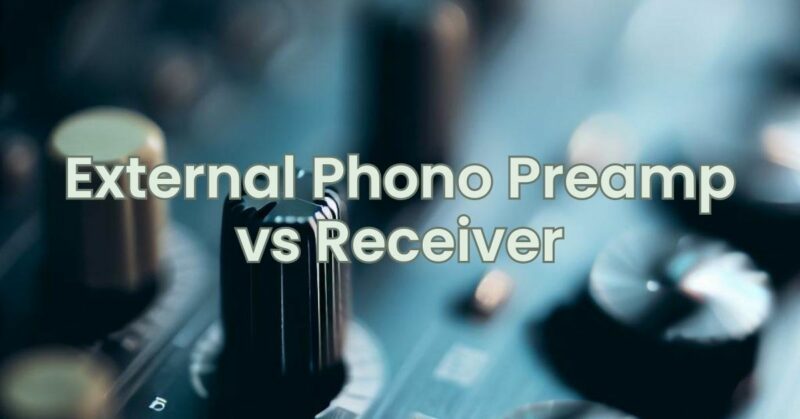Vinyl enthusiasts often face the dilemma of whether to use an external phono preamp or rely on the built-in phono stage of their receiver when setting up their vinyl playback system. Both options have their merits, and understanding the differences between an external phono preamp and a receiver’s built-in phono stage is crucial for making an informed decision. In this article, we will explore the advantages and considerations of each option to help you choose the right path for optimal vinyl playback.
External Phono Preamp: An external phono preamp is a separate component designed specifically to amplify the low-level signal from a turntable’s cartridge and apply RIAA equalization. Here are some key points to consider:
- Enhanced Performance: Dedicated phono preamps are often built with high-quality components and specialized circuitry, offering superior amplification and signal processing capabilities. This can result in cleaner amplification, reduced noise, improved dynamic range, and overall better sound quality compared to the built-in phono stages found in receivers.
- Flexibility and Customization: Using an external phono preamp provides greater flexibility in terms of system setup. You can select a preamp that suits your specific needs, preferences, and budget, allowing you to optimize the sound quality based on your cartridge, turntable, and overall audio system.
- Upgrade Path: An external phono preamp offers the advantage of easy upgradeability. If you want to further enhance your vinyl playback experience in the future, you can easily replace or upgrade your phono preamp without having to replace your entire receiver.
Built-in Phono Stage in Receivers: Most vintage receivers and some modern receivers come equipped with a built-in phono stage. Here are some factors to consider:
- Convenience and Space Efficiency: Using the built-in phono stage in your receiver eliminates the need for an additional external component. This can be more convenient and space-efficient, especially if you have limited space in your setup.
- Cost Savings: If you already own a receiver with a built-in phono stage, utilizing it can be a cost-effective solution compared to purchasing a separate external phono preamp.
- Variable Quality: The quality of built-in phono stages can vary significantly depending on the receiver model and manufacturer. Higher-end receivers may offer high-quality phono stages that rival dedicated external preamps. However, lower-end or entry-level receivers may have phono stages that provide basic amplification without the same level of performance or customization options as dedicated external preamps.
Considerations for Decision-making:
- Sound Quality: If achieving the best possible sound quality is your primary goal, investing in a dedicated external phono preamp is recommended. Their superior components and dedicated design often result in improved amplification and signal processing.
- Budget and Future Upgrades: If you have budget constraints or plan to upgrade your entire audio system in the future, utilizing the built-in phono stage of your receiver can be a practical choice. This allows you to allocate funds towards other essential components.
- Receiver Quality: If you own a high-quality receiver with a well-regarded built-in phono stage, utilizing it may offer satisfactory sound quality without the need for an external preamp. However, if you have a lower-end or entry-level receiver, a dedicated external phono preamp may provide noticeable improvements.
Choosing between an external phono preamp and the built-in phono stage of a receiver ultimately depends on your priorities, budget, and the specific equipment you have. An external phono preamp generally offers enhanced performance, flexibility, and upgradeability, but it comes at an additional cost. On the other hand, utilizing the built-in phono stage in a receiver can be more convenient and cost-effective, especially if it is of good quality. Carefully evaluate your needs, preferences, and budget to make the best decision for optimal vinyl playback in your specific setup.


